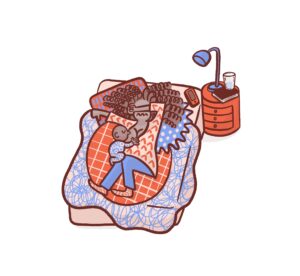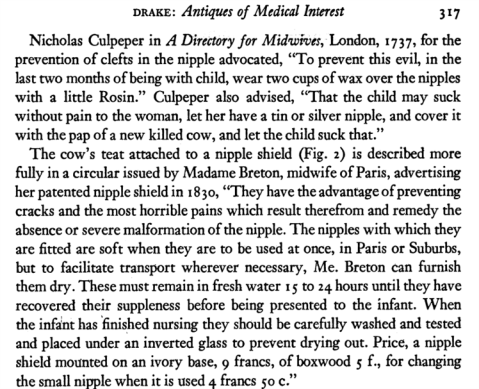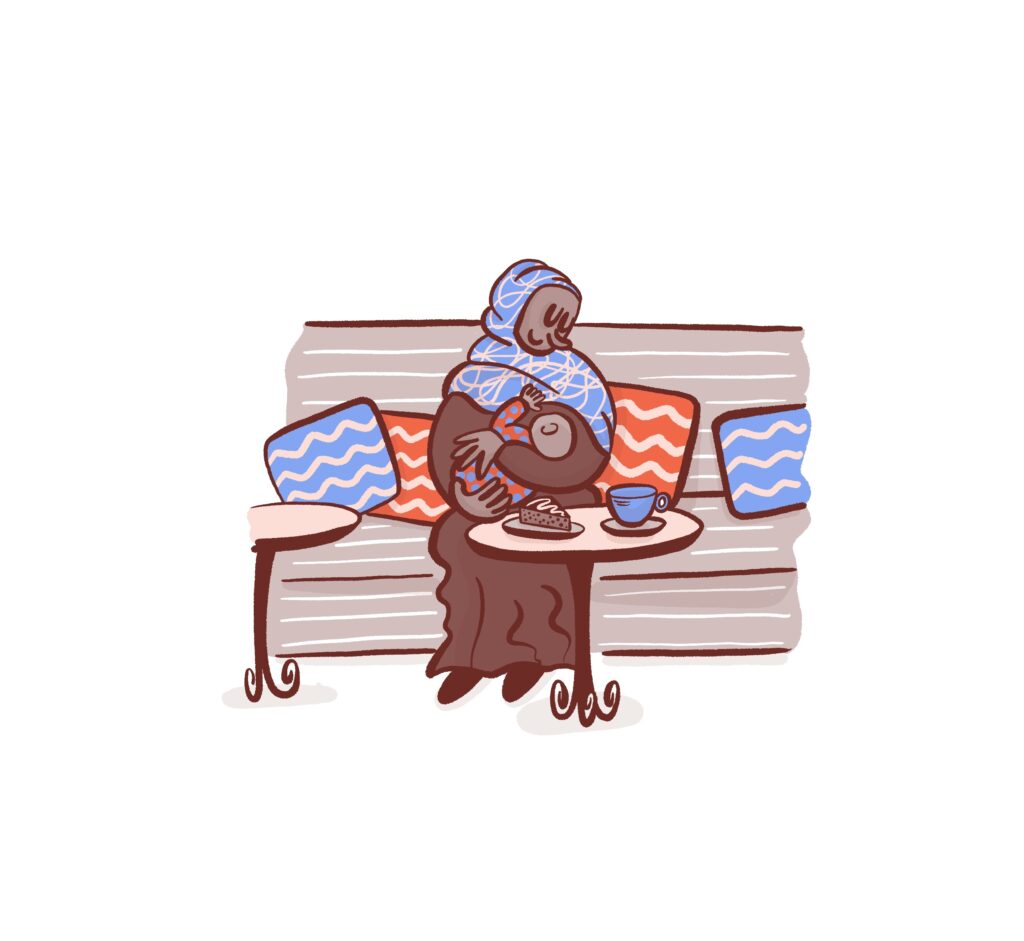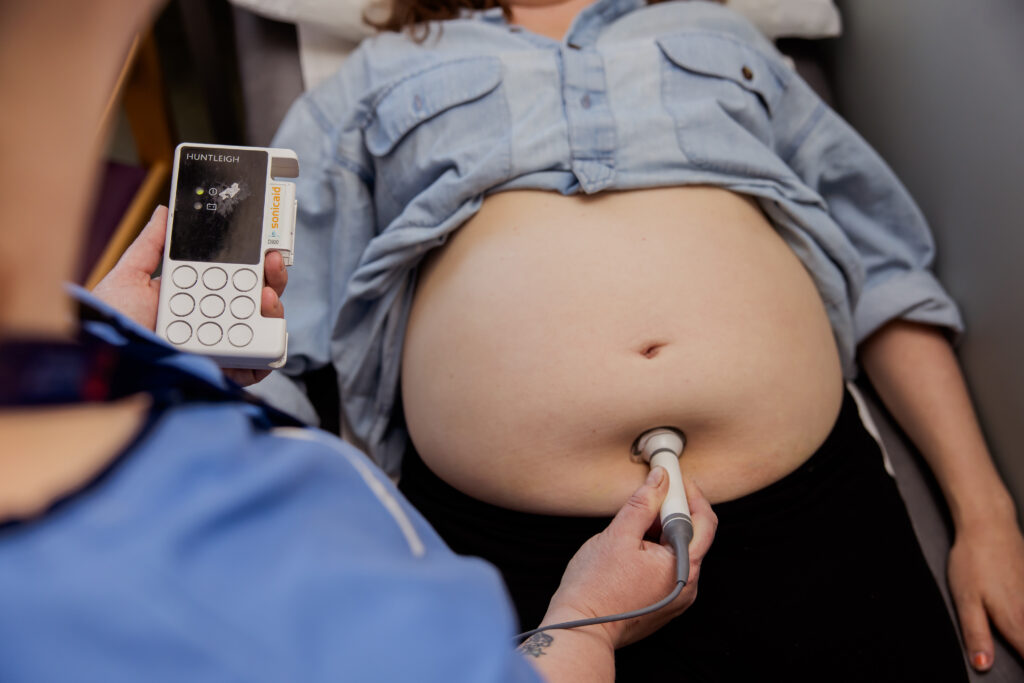Dr Lucy Goddard discusses the history, use and stigma surrounding nipple shields, and introduces her research project aimed at supporting women and healthcare professionals to make informed decisions around nipple shield use.

About the Author
Dr Lucy Goddard is a postdoctoral researcher in Maternity and Women’s Health at the University of Oxford. Lucy’s research focuses on improving care in an equitable way for all women during pregnancy and the postnatal period.
This project is funded by the NIHR School for Primary Care Research, and led by Rebekah Burrow and Emily McFadden. Julian Treadwell and Lucy Goddard are co-applicants on the project.
Nipple shields for breastfeeding: Trying to clear the fog around their use.
Research is about finding answers to unanswered questions. I’m a midwife by background and a post-doctoral researcher and was approached by a colleague who was seeking answers: is there any evidence for the safety or efficacy of using nipple shields to support breastfeeding?
Thinking back to my days in clinical practice and midwifery training, I could recall minimal guidance around their use. I do remember being cautious in advising their use due to the risk of adversely affecting milk flow and supply.
As is well known, breastfeeding is associated with better health outcomes, especially for babies born prematurely. However, the rates of breastfeeding in the UK are some of the lowest in the world, with many women stopping earlier than desired.
Nipple shields have been used by breastfeeding mothers for hundreds of years [1].

Figure 1: Drake TGH: Antiques of Medical Interest: Nipple Shields. Journal History of Medicine and Allied Sciences 1946, 1(2):316-317. DOI: 10.1093/jhmas/1.2.316
They are generally used to help babies to latch and reduce pain for people breastfeeding. However, currently there is no consensus as to whether nipple shields are safe or helpful. Current clinical guidelines rely on low quality evidence meaning there is a significant gap in our understanding to inform best practice [2, 3]. There are high-quality systematic reviews of ways to support breastfeeding that do not include nipple shields, and un-systematic reviews that do [4-6].
Our research team is now striving to find answers and produce materials that could support healthcare professionals, and the women we care for, to have conversations about using nipple shields or not.
So far, we have spoken to patients and healthcare professionals about nipple shields.
What they told us:
“I had to find the solution for the pain…seeing him come towards me, hungry, would terrify me… it was the lowest I have felt in my life.”
“toe-curlingly painful – I understand what that means now because it really did.”
“I didn’t know it would be this difficult [to latch].”
Their experiences with nipple shields were mixed:
“I tried it, but thought it’s not going to work, it doesn’t fit my breast, it’ll come off, it was a tool that wouldn’t fit… I exclusively expressed to seven months.”
“Nipple shields were what saved us… a few weeks down the line we didn’t need them.”
Others avoided using them due to conflicting advice:
“I saw a support worker from the infant feeding team… she said ‘they’re probably gonna kill me for this if I say it – have you tried nipple shields?”
“For a long time, I kept them as an insurance policy… one of the midwives (she wasn’t that helpful) said ‘don’t use them. Just sort out your nipples – put gel on or whatever’. I got the message I definitely don’t use them.”
“A friend, she said ‘have you tried nipple shields? – they really worked for me’ she said almost, ‘keep it quiet – you’ll get told off for using them.”
Health care professionals and breastfeeding supporters often expressed caution about potential harm:
“… it very quickly can be pushed on to a family and that can also be tricky because then babies do get a little bit addicted to shields.”
“… it’s not something we would educate women on … it’s drilled into our education … training is actually that using them long term can reduce your milk supply.”
Our research approach
We will be carrying out a mixed methods systematic review of the evidence. This will help us to find out what evidence already exists, and bring this together, to find out what is missing to support women and healthcare professionals to have conversations and make informed decisions around nipple shield use.
When looking at the evidence, we are working with people with personal experience, healthcare professionals and people who provide breastfeeding support to prioritise the outcomes that are important to them.
 Women we spoke to prioritised outcomes like:
Women we spoke to prioritised outcomes like:
- being able to breastfeed at all
- whether the baby was “dropping centiles”
- how old the baby would be when they breastfed for the last time
- levels of pain
Research has often focused on outcomes like:
- exclusive breastfeeding, and how old the baby would be when they began other milk
- sucking frequency
- nutritive sucking
- milk transfer measured in millilitres
- percentage of available milk removed from the breast
- levels of pain
We will work together to co-produce information about the results of our study for people who are breastfeeding, health care professionals and others who provide feeding support. This will help people who wish to breastfeed, health care professionals and breastfeeding supporters to be able to find and understand information about nipple shields. It will enable informed shared-decision making between people breastfeeding and healthcare professionals.
Are you interested in learning more about this project? Maybe you could even help us to get this research right? Please email us – we are very happy to also learn from you and your experiences. You will receive £25 for your time.
Throughout the article, in my reference to women, this term should be taken to encompass all birthing people.
References
- Drake TGH: Antiques of Medical Interest: Nipple Shields. Journal of the History of Medicine and Allied Sciences 1946, 1(2):316-317.
- UNICEF: Baby-friendly Hospital Initiative training course for maternity staff: trainer’s guide. In: Baby-friendly Hospital Initiative training course for maternity staff: trainer’s guide. edn. Edited by UNICEF. https://www.who.int/publications/i/item/9789240008915; 2020.
- Vieira N, Smith A: Clinical Guideline: Using a Nipple Shield. In. Edited by Group NCO. https://eoeneonatalpccsicnetwork.nhs.uk/wp-content/uploads/2023/07/EoE-Nipple-Shield-Guideline.pdf; 2023.
- Dennis CL, Jackson K, Watson J: Interventions for treating painful nipples among breastfeeding women. Cochrane Database of Systematic Reviews 2014(12).
- Flint A, New K, Davies MW: Cup feeding versus other forms of supplemental enteral feeding for newborn infants unable to fully breastfeed. Cochrane Database of Systematic Reviews 2016(8).
- Chow S, Chow R, Popovic M, Lam H, Merrick J, Ventegodt S, Milakovic M, Lam M, Popovic M, Chow E et al: The Use of Nipple Shields: A Review. Front Public Health 2015, 3:236.


